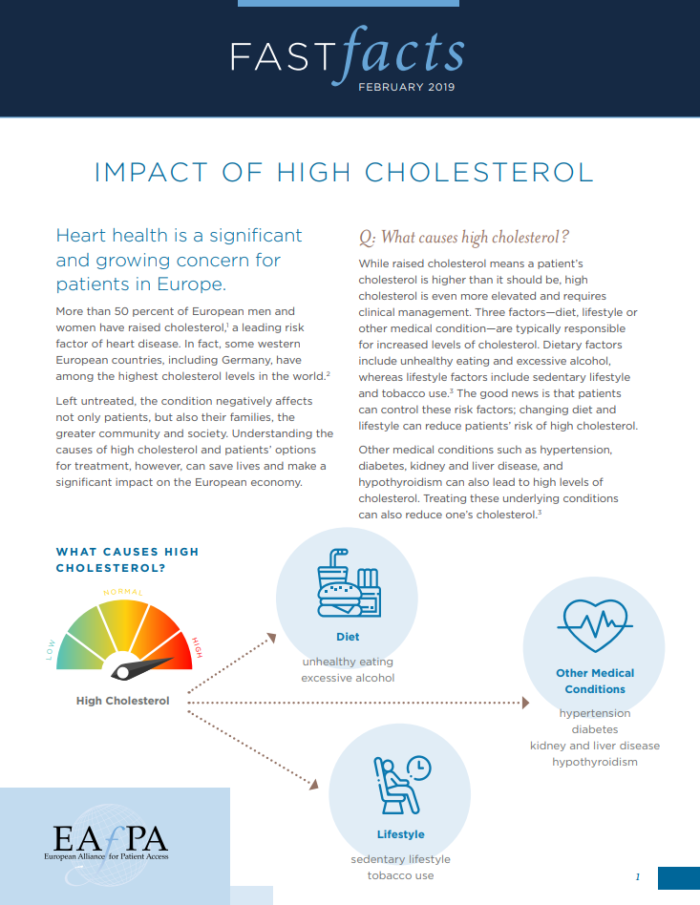New “Fast Facts” Highlights Impact of High Cholesterol on Europe
February 8, 2019
More than 50 percent of Europeans have raised cholesterol, increasing their risk of heart attack, stroke and death – and costing the EU billions every year in health care expenses and lost productivity. So explains a new “Fast Facts” policy brief from the European Alliance for Patient Access, a division of the Global Alliance for Patient Access.
Raised LDL, or “bad,” cholesterol increases one’s risk of cardiovascular disease, “the leading cause of death in Europe,” the brief notes. High cholesterol and its related conditions also have a downstream societal effect, and a tremendous financial impact. Examples include:
- Cardiovascular disease annually costs the EU economy €54 billion in lost productivity, €111 billion in health care expenses and €45 billion in informal care, and
- Stroke patients have an increased likelihood of permanent work disability.
But patients can address their high cholesterol, reducing their risk of these and other conditions, and limiting their burden.
Physicians can support patients through lifestyle modifications such as eating nutritious foods, limiting alcohol consumption and quitting smoking tobacco. Yet these changes may not be enough for all patients. Physician can also prescribe medications “to guard against potentially fatal cardiovascular disease,” the brief explains.
Statins are typically the first-line pharmacological treatment. But, for some patients who do not respond to statins, physicians may prescribe innovative PCSK9 inhibitors. Research has shown the “cholesterol busting” medicine is particularly effective for people who have a family history of a cholesterol-related condition, called familial hypercholesterolemia.
Last May, the European Commission approved the PSCK9 inhibitor evolocumab for another indication: to prevent heart attack and stroke for patients who have already survived a cardiac event. This approval gives Europeans another secondary prevention tool, one that could save their life.
To learn more, read “Fast Facts: Impact of High Cholesterol.”
Tags: CardiovascularCategorized in: Blog


